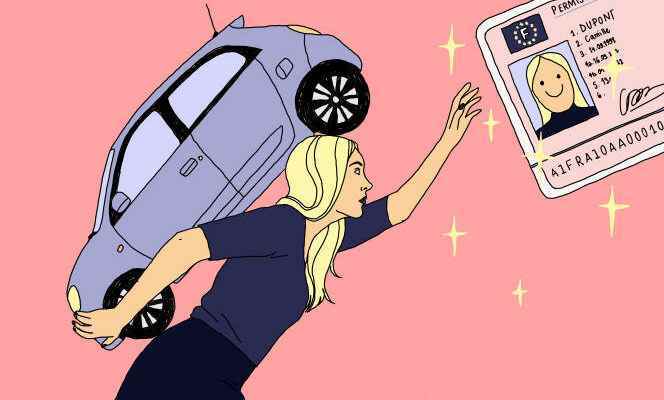Today, like every day at the ECF driving school in Tours, the schedule is packed. The comings and goings of the dozen instructors coming to pick up the students who are waiting on the sidewalk before their driving lesson are incessant. “This is one of our best years in terms of registrations,” explains Sylvie Canetto, the head of the agency. According to her, this intense activity is not only explained by postponements linked to the health crisis, but also by the multiplication of the possibilities of financing the permit, “which allow young people for whom its cost was a hindrance a few years ago to get started”, explains the manager.
Fact, the results of the exams of driving licenses passed in 2021, published recently, confirms the rebound in registrations after the health crisis: of the 905,000 people who obtained the B license, no less than 715,400 were between 17 and 24 years old (a clear catch-up of the year 2020 which had seen this total fall to 524,800). But beyond the rebound effect, this number had tended, in recent years, to decrease… Which fueled the idea of a disaffection for what was previously like a sesame that we were barely trying to win. majority reached. Thus, 69% of 18-24 year olds have license in 2022, compared to 77% in 2002, according to the figures of the reference study “Parc Auto” carried out by the Kantar Institute.
The evocation of this lack of interest among young people makes Sylvie Canetto smile, who does not see “no trace” in his driving school. How, then, to analyze this phenomenon? “It’s not so much that young people pass the permit less than before, but some of them now pass it later, and not from the age of 18”, says Hervé Marchal, professor of sociology at the University of Burgundy, who participated in the collective writing of the book Young people driving (Editions Erès, under the direction of David Le Breton, 264 pages, 25 euros).
He warns against a certain vision “urban-centric” the problem transforming some weak (sometimes even contradictory) statistical signals into a disinterest of young people vis-à-vis the license. This would be fueled, we like to think, by a more refined ecological sensitivity among these young people. Don’t they use other means of transport more than their elders (train, bicycle, carpooling, etc.)?
Disenchanted Vision
Except that if the license marks time with young people in cities and large agglomerations, studies show that it is still the subject, according to the researcher, of a “strong desire”. But it is a “desire under duress”particularly financial, among those in rural areas and peri-urban for “who the car remains the only means of transport and emancipation” : 77% of 18-24 year olds in rural areas hold a permit, according to numbers from the National Institute for Youth and Popular Education (Injep) in 2021, compared to 65% of young inhabitants of cities with 20,000 to 100,000 inhabitants, and… 50% of those living in the Paris metropolitan area where moreover, on September 18, a “car-free day” is held.
You have 66.11% of this article left to read. The following is for subscribers only.
